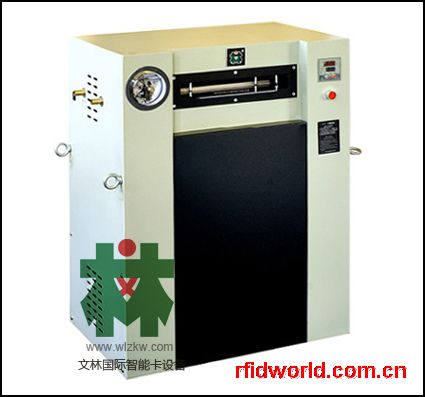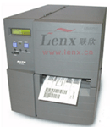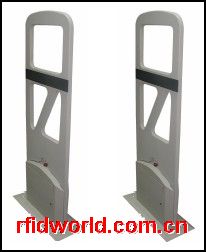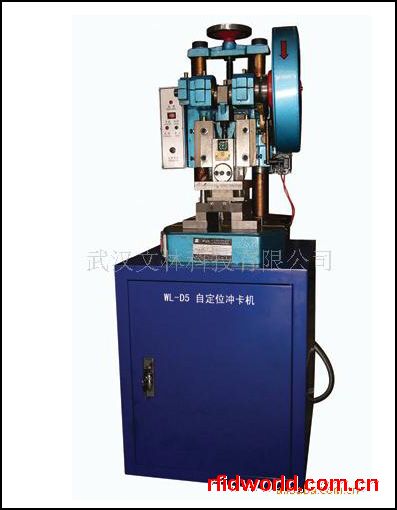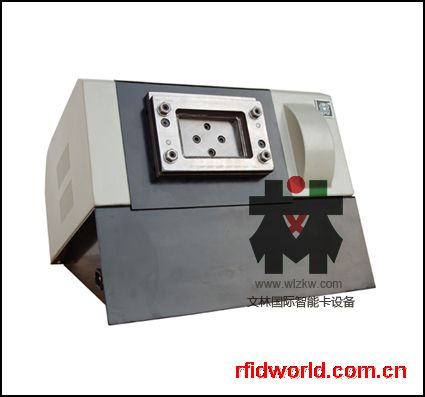RFID国际新闻摘要(12.5-12.9)
Savi Technology产品获得韩国433.92 MHz频段认证 http://www.rfidworld.com.cn/news/20051252239372689.htm
AIM Global 使用新的RFID标识 http://www.rfidworld.com.cn/news/2005127231372708.htm
Dec. 9, 2005—The following are news announcements made during the week of December 5.
ABI Report Says UHF Chipsets May Lower Reader Prices
A report from Oyster Bay, N.Y.-based ABI Research, titled "The Market for RFID Readers" says end users' frustration over the high prices for ultra-high-frequency (UHF) RFID interrogators (readers) might be eased within the coming year, if integrated chipsets for readers become widely available and reader production increases. These two factors are likely to drive down UHF interrogator manufacturing costs, says the report. Integrated chipsets combine many disparate interrogator components—such as RF signal processors for receiving and broadcasting signals—into a single unit. Chipsets generally cost manufacturers less than the combined price of separately purchasing the components used therein. ABI Research analyst Sara Shah says chipsets are currently used to manufacture high-frequency (HF) readers, and that designers believe the prices of UHF readers, which currently run between $2,500 and $3,000, will likely fall when integrated chipsets become available for those readers. According to the report, prices for UHF readers might fall in late in 2006 or early 2007. Increasing orders for UHF readers will also drive prices down. In writing the report, Shah interviewed end users, as well as interrogator designers and manufacturers. The full report, available on the ABI site, costs $4,000.
Costs Stymieing RFID in European Supply Chains
A study of technology in European supply chains has found that while manufacturers, retailers and logistics providers see potential benefits from investing in RFID, most companies believe the technology is still too expensive to deploy. Published by U.K.-based distribution and logistics research group Analytiqa, the "Technology Across the Supply Chain" report draws on interviews, conducted in the third quarter of 2005, with more than 100 manufacturers, retailers and third-party logistics providers (3PLs) in Eastern and Western Europe. "Some [survey participants] are still looking to implement bar code systems. It shows that they are beginning to understand the visibility benefits of RFID, but there is a cost-prohibitive factor and they see bar codes as a cheap alternative," says Mark O'Bornick, senior analyst at Analytiqa. Even so, the survey found that RFID was considered the second most important future investment after enterprise resource planning systems, but ahead of warehouse management, inventory management and forecasting systems. Sixty-five of the survey respondents were manufacturing companies, 24 were retailers and 11 were 3PLs. Some of the barriers to RFID uptake that respondents indicated included doubts over the ability to use data collected through RFID, the lack of standard systems and the price of the tags. Companies also stated the technology's real benefits would stem only from RFID-enabled visibility across the entire supply chain. The research is available at Analytiqa's Web site at a cost of $1,495.
Avery Dennison RFID Names 17 Qualified Converters
Avery Dennison RFID, a Clinton, S.C., designer and manufacturer of RFID tags, has announced that 17 RFID converters have met its standards to become Avery Dennison "Qualified Converters." The converters named are: CCL Label, Kennedy Group, Lowry Computer Products, Mid South Graphics, Moore Wallace, MPI Label Systems, Nashua, National Label, NCR Systemedia Division, Paxar Americas, R&V Group, RSI ID Technologies, Sato America, Topflight Corporation, Weber Marking Systems, WS Packaging and Zebra Technologies. Before awarding the certifications, Avery Dennison says it worked with the technical staff of each company for several months to conduct comprehensive evaluations of both Avery Dennison's RFID inlays and the converter's manufacturing and testing capabilities. The company is undergoing similar efforts with converters in Europe.
AeroScout, Alanco Team Up on Wi-Fi Tracking
AeroScout, a San Mateo, Calif., provider of Wi-Fi based active RFID solutions, has joined with Alanco Technologies, a provider of RFID-based tracking systems for correctional facilities, to develop and deliver a 2.4 GHz real-time location system (RTLS) for the corrections industry. The two firms are currently undertaking a pilot of Alanco's inmate tracking system using AeroScout's Wi-Fi RTLS technology within a European prison. Prior to working with AeroScout, Alanco provided its inmate tracking system only with 900 MHz tags and interrogators (see L.A. County Jail to Track Inmates). However, the vendor says a Wi-Fi-based system can be deployed internationally with more ease than a 900 MHz system, because the UHF band is regulated differently in countries outside the United States. Since the Wi-Fi tags can be read by standard Cisco wireless access points, the Alanco/AeroScout system can be less expensive to implement by end users with existing Wi-Fi networks than a UHF system requiring the installation of 900 MHz interrogators.
HID INSIDE Partnering on Access Control Apps
HID, an Irvine, Calif., provider of RFID-based access control cards for security applications, has selected INSIDE Contactless, an RFID technology manufacturer based in France, as its exclusive provider of high frequency (13.56 MHz) chips and readers for access control devices. INSIDE has already delivered nearly 10 million of its 13.56 MHz PicoPass RFID chips to HID, as well as 13.56 MHz readers. Until now, though, the partnership between the two companies has been nonexclusive. HID subcontracts the assembly of 13.56 MHz tags using INSIDE's 2KS and 16KS chips, which offer 2 and 16 kilobits of memory, respectively, as well as support for mutual authentication. HID embeds these inlays into its iCLASS 13.56 MHz RFID smart cards, which comply with the ISO 14443B and ISO 15693 standards. INSIDE is also working with HID to develop smart cards compliant with the Federal Information Processing Standard 201, the standard for access control to rooms and buildings (physical access) and to the use of computers and similar devices (logical access) for U.S. government employees. The two companies are also evaluating how they might combine Visa Contactless payment technology with access control capabilities on one card and interrogator.
New Zealand Passports Carrying Philips Chips
The Canadian Bank Note Co., a developer of passports and other identification documents, is integrating Philips' MX P5CT072 microchip—which has 72 KB of memory and is compliant with the ISO 14443-A standard for secure RFID transmissions—into New Zealand's new electronic passports. New Zealand has named the Canadian Bank Note Co. as the lead designer and technology integrator for its electronic passport program. RFID-enabled New Zealand passports with Philips' chips were first issued in November and are currently being used in the first U.S. e-passport airport trial, taking place in Los Angeles. Manuel Albers, Philips' director of regional marketing in the Americas, and of sales and marketing for Philips' Identification division, says his company has been chosen as the RFID chip provider for 15 out of the current 20 electronic passport programs being deployed around the globe. He notes that many of these counties are not announcing details of the technology being used in their passports, but that Austria and Germany have also named Philips as the provider of chips used in their e-passports.
South Korea Approves Use of Savi 433.92 MHz Systems
The South Korean Government has certified Savi Technology, a Sunnyvale, Calif., provider of RFID-based supply chain solutions, to use the 433.92 MHz radio frequency band for active RFID tags and interrogators. The decision by the Ministry of Information and Communication (MIC) supports the ISO 18000-7 standard operating at 433.92 MHz, and enables deployment of Savi's RFID-based solutions in South Korea. One of Asia's largest trading partners with the United States, South Korea ships about 900,000 containers of goods between the countries annually, according to Savi. Specifically, MIC granted certification for the use of Savi's ST-654 active RFID tag, which has transmission ranges up to 300 feet, and Savi's SR-650 interrogator. These devices are used for tracking shipping containers, vehicles and other large assets.
AIM Global Unveils RFID Emblem
Auto-ID industry trade association AIM Global has released its "RFID Emblem," an updated version of its "RFID Mark" designed a year ago. The organization's North America Standards Action Group (NASAG) developed the AIM RFID Emblem to provide those who handle or process hardware or RFID-tagged goods with a visual guide to identify RFID-enabled labels and tags and their compatibility. There are two types of emblem: one for identifying which RFID tags, interrogators and printer-encoders are compatible with each other, and one for identifying the frequency, coding authority (such as EPCglobal or the U.S. Department of Defense) and data construction (such as serialized global location number or license plate identification) used for the RFID inlay within a tag or smart label. Tag and interrogator manufacturers or smart label converters would be responsible for attaching or printing the emblems to devices or labels, but AIM Global says the use of the emblems would be voluntary. The emblems use two-character codes that combine either a letter and number or a letter and symbol. The codes' meanings can be found on a public index, accessible here. The new graphic retains the same code structure of the earlier design, but adds "RFID" to the graphic. AIM designed the new graphic to be bolder and less technical, yet still recognizable and easily reproducable by any printing, engraving or molding process. The group suggests the text "AIM RFID Emblem" be placed adjacent to the emblem and notes that it is in discussion with the International Standards Organization (ISO) to incorporate the emblem into a certification program for ISO-compliant RFID tags and interrogators-printers.

 登录
登录
 注册
注册







